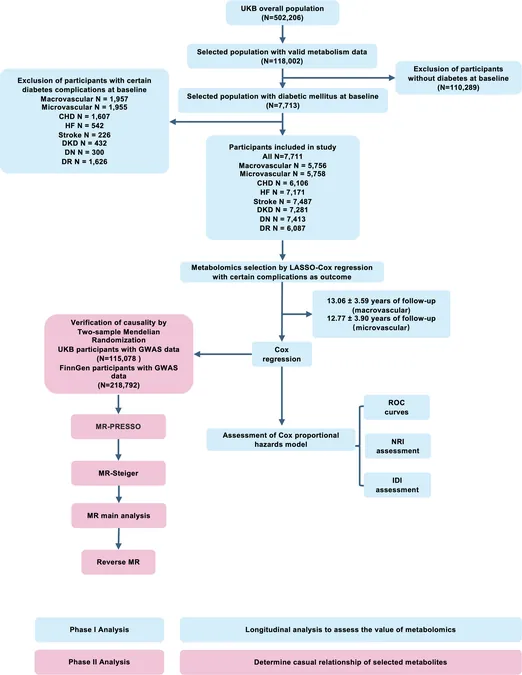
New Zealand Battles Superbug Surge: Can Genomics Save Us?
2025-08-17
Author: Wei Ling
A Shocking Wake-Up Call from the Hospital
After a routine C-section in Auckland, one mother faced unexpected agony and debilitating fatigue, only to discover it was an infection from a notorious superbug: methicillin-resistant Staphylococcus aureus, or MRSA. Her alarming experience is far from isolated; another mother in Dunedin suffered a similar fate, diagnosed with MRSA and internal bleeding after childbirth.
A Growing Health Crisis
MRSA, once thought to be confined to hospitals, is now infiltrating communities across New Zealand. The strain known as AK3, which emerged here in 2005, is the leading cause of MRSA infections nationwide and has now spread to the South Pacific and Europe.
How Antibiotics Created a Monster
This frightening evolution can be traced through genomic sequencing, highlighting how AK3 developed from a drug-susceptible ancestor into a formidable clone. It gained critical resistance genes, particularly against methicillin and fusidic acid—a topical antibiotic previously dispensed excessively in New Zealand. Although fusidic acid prescriptions have dropped since 2016, reversing resistance remains a challenge.
The Role of Over-Prescription
Once a go-to treatment for skin infections, fusidic acid was prescribed too liberally in the community, paving the way for the emergence of AK3. Our research illustrates the unintended consequences of antibiotic overuse on a national scale, leading to a superbug that now threatens health across New Zealand.
Inequality in Infection Rates
Alarmingly, the impact of AK3 isn't felt evenly. Māori individuals are three times more likely to suffer from skin infections caused by S. aureus, while Pacific peoples are nearly five times more affected. The socio-economic disparities exacerbate these risks, with those in deprived areas facing hospitalizations at nearly four times the rate of wealthier counterparts.
Call for Proactive Measures
To combat this burgeoning crisis, it's essential to preserve the effectiveness of existing antibiotics through careful prescribing and enhanced access to timely medical care. We must confront deep-rooted inequities and invest in integrated health strategies that encompass human, animal, and environmental domains—commonly referred to as the 'One Health' approach.
Surveillance is Key
In a recent development, AK3 was even detected in raw milk from a cow suffering mastitis—indicating the interconnectedness of resistance genes across species. This highlights the critical need for comprehensive surveillance systems that monitor antibiotic resistance trends and inform public health responses.
The Path Forward
The rise of AK3 is not merely an academic concern but a clarion call for integrated action. Genomics should play a pivotal role in crafting evidence-based responses to both existing and emerging diseases. New Zealand possesses the resources and expertise to become a leader in antimicrobial surveillance, but decisive action is necessary.
Act Now to Protect Our Future
To safeguard our health and economy, we need to treat antibiotics with the seriousness they deserve, employing localized data to ensure they remain effective when needed. Expanding antimicrobial resistance surveillance and genomic analysis is crucial for early detection and disruption of transmission.
Conclusion: A Turning Point
The stories of the two mothers battling MRSA illustrate the stakes involved. AK3 represents not just a current challenge but a test for our healthcare system's ability to transition from a reactive to a proactive approach. If we are to prevent future superbugs, we must act decisively and collaboratively. Together, let’s ensure our antibiotics remain a robust line of defense.





 Brasil (PT)
Brasil (PT)
 Canada (EN)
Canada (EN)
 Chile (ES)
Chile (ES)
 Česko (CS)
Česko (CS)
 대한민국 (KO)
대한민국 (KO)
 España (ES)
España (ES)
 France (FR)
France (FR)
 Hong Kong (EN)
Hong Kong (EN)
 Italia (IT)
Italia (IT)
 日本 (JA)
日本 (JA)
 Magyarország (HU)
Magyarország (HU)
 Norge (NO)
Norge (NO)
 Polska (PL)
Polska (PL)
 Schweiz (DE)
Schweiz (DE)
 Singapore (EN)
Singapore (EN)
 Sverige (SV)
Sverige (SV)
 Suomi (FI)
Suomi (FI)
 Türkiye (TR)
Türkiye (TR)
 الإمارات العربية المتحدة (AR)
الإمارات العربية المتحدة (AR)